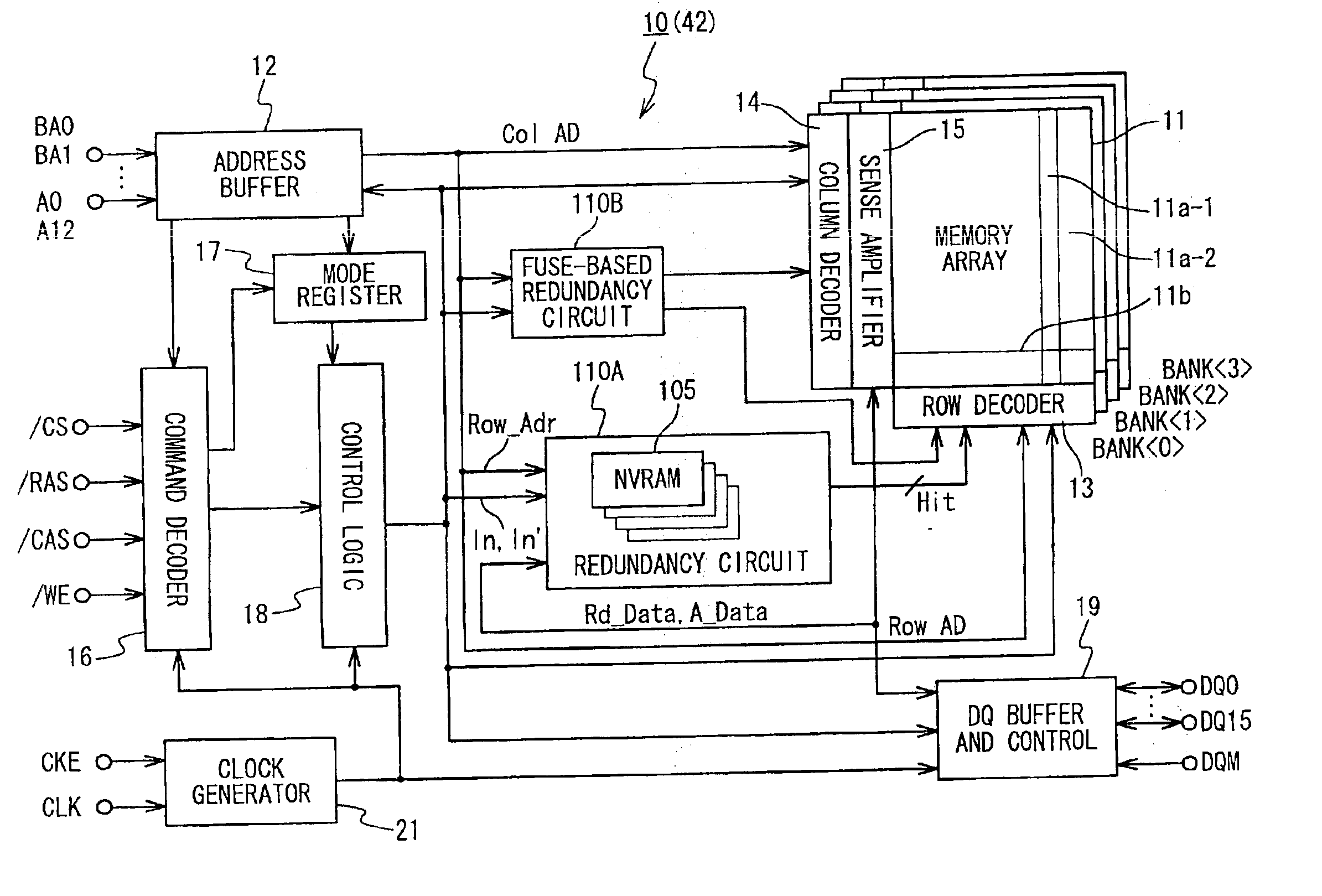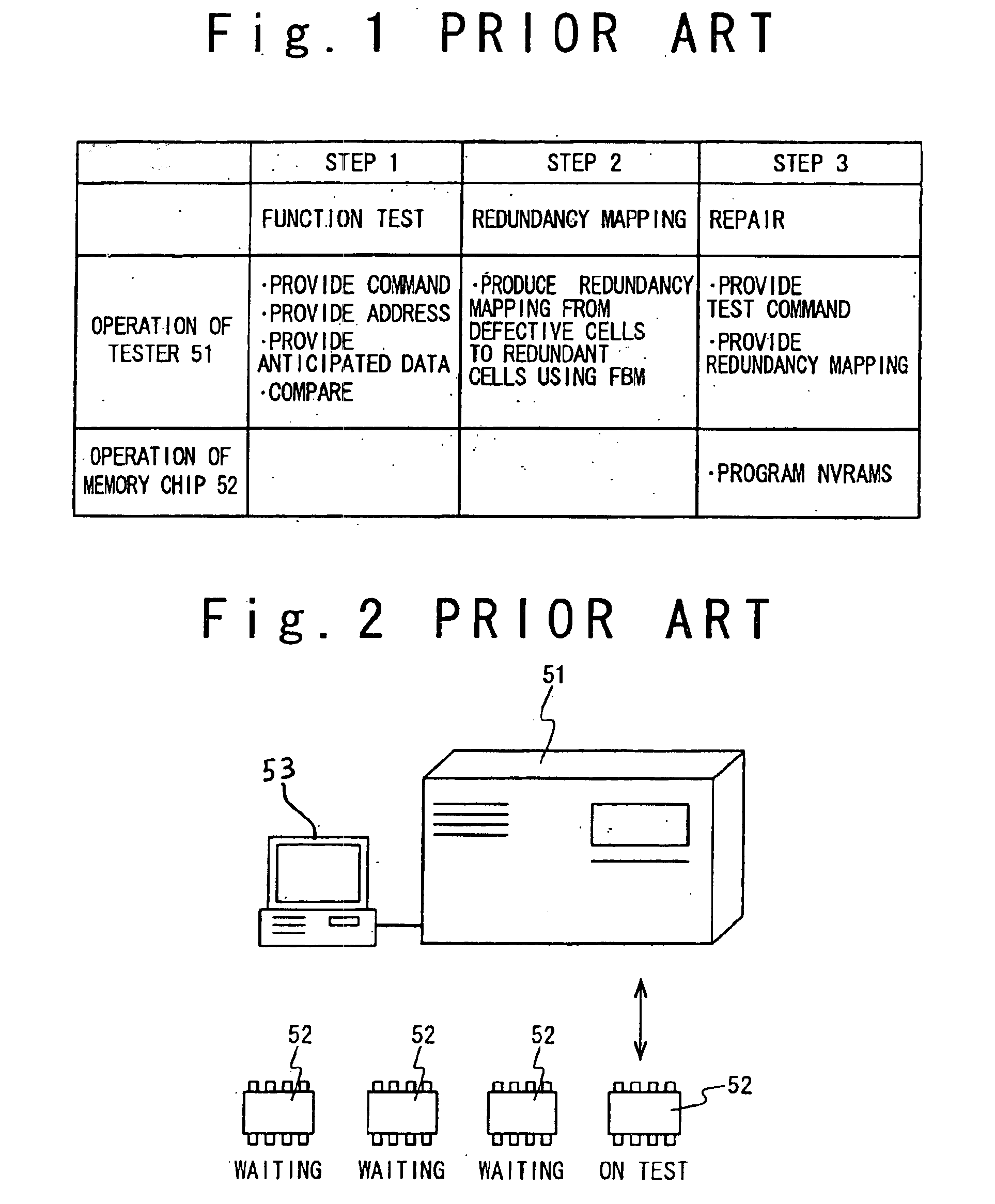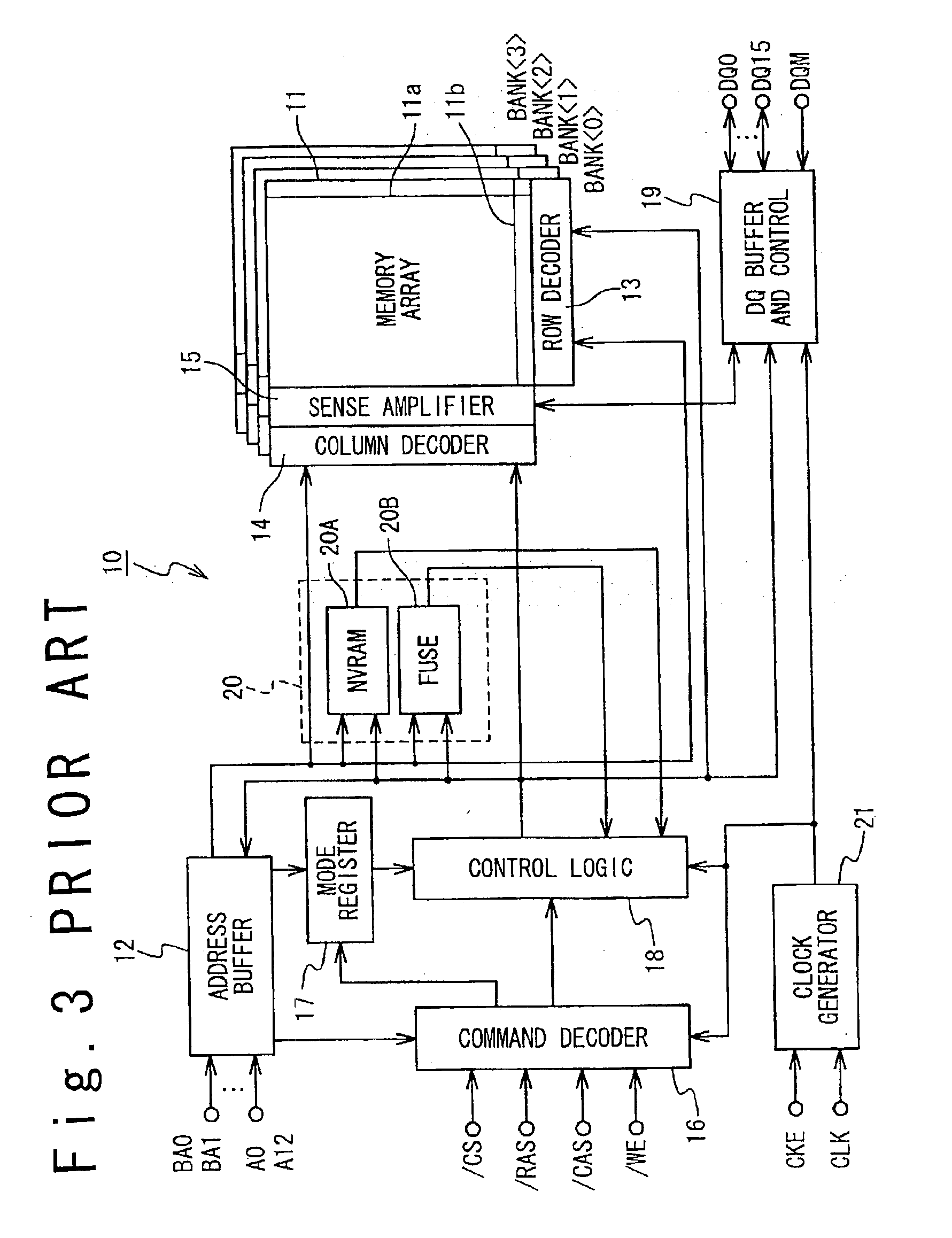Redundancy architecture for repairing semiconductor memories
- Summary
- Abstract
- Description
- Claims
- Application Information
AI Technical Summary
Benefits of technology
Problems solved by technology
Method used
Image
Examples
Embodiment Construction
[0067]The present invention will be described below in detail with reference to the attached drawings.
Memory Device Structure
[0068]FIG. 4 shows a block diagram of a monolithic SDRAM 10 provided on a memory chip 42 including a redundancy architecture in accordance with the present invention. It should be noted that an element shown in FIG. 4 and its corresponding elements shown in FIG. 3 are denoted by the same numeral to represent that they have a substantially identical function, and thus a detailed explanation thereof may be omitted.
[0069]The SDRAM 10 includes a memory cell array 11, an address buffer 12, a command decoder 16, a mode register 17, a control logic circuit 18, a data input / output buffer 19, a clock generator 21, a NVRAM-based redundancy circuitry 110A, a fuse-based redundancy circuitry 110B.
[0070]The memory cell array 11 includes memory banks 0> to 3>, and each of the memory banks is provided with memory cells arranged in rows and columns, redundant cells, a row deco...
PUM
 Login to View More
Login to View More Abstract
Description
Claims
Application Information
 Login to View More
Login to View More - R&D
- Intellectual Property
- Life Sciences
- Materials
- Tech Scout
- Unparalleled Data Quality
- Higher Quality Content
- 60% Fewer Hallucinations
Browse by: Latest US Patents, China's latest patents, Technical Efficacy Thesaurus, Application Domain, Technology Topic, Popular Technical Reports.
© 2025 PatSnap. All rights reserved.Legal|Privacy policy|Modern Slavery Act Transparency Statement|Sitemap|About US| Contact US: help@patsnap.com



